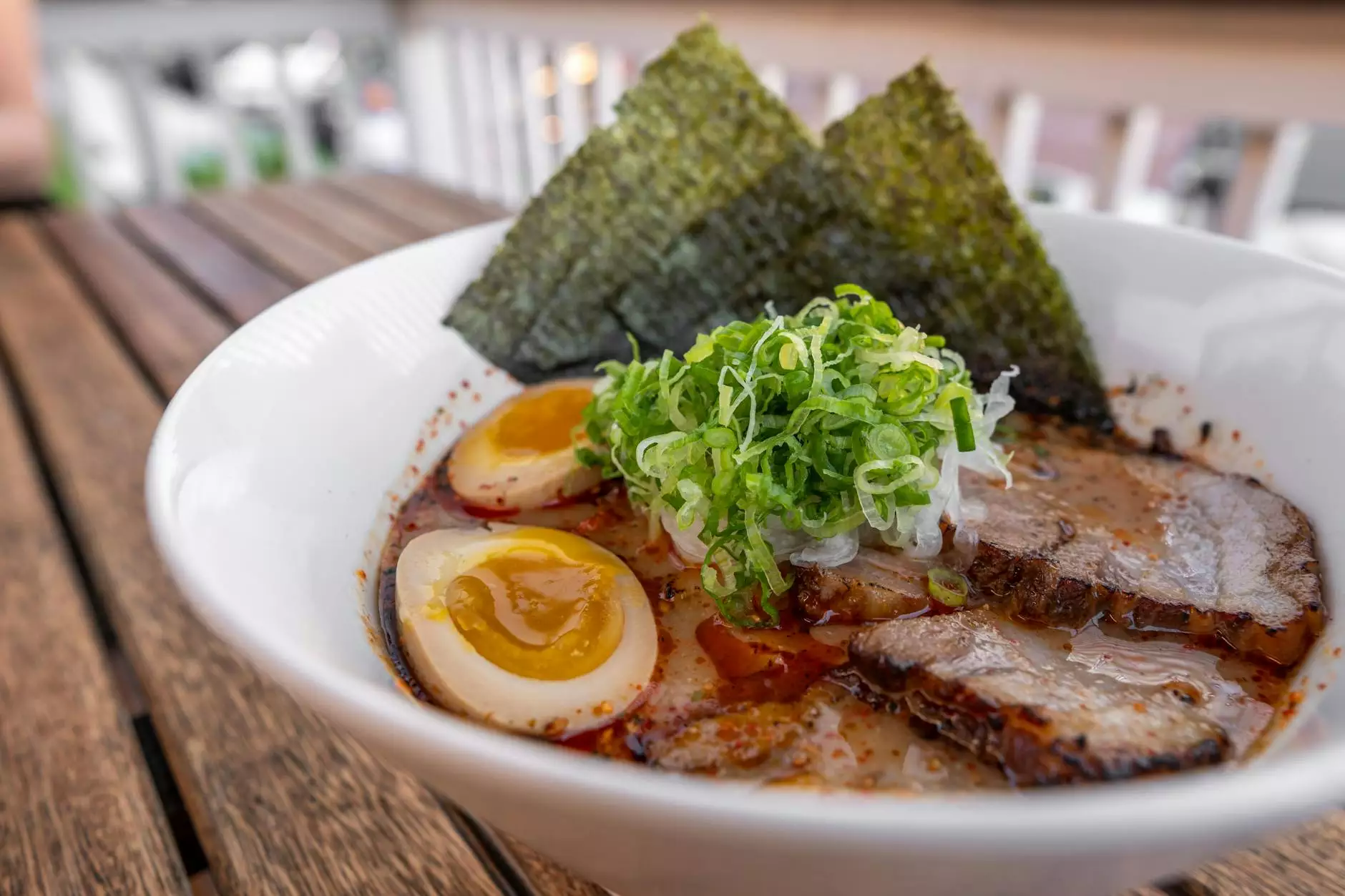Growing Wasabi Root: A Comprehensive Guide to Cultivation

Wasabi, a pungent root vegetable known for its unique flavor profile and vibrant green color, is a staple in Japanese cuisine, particularly in sushi bars. The art of growing wasabi root involves understanding its specific environmental needs, cultivation methods, and post-harvest processing. In this extensive guide, we will delve into the intricacies of wasabi cultivation, ensuring that your understanding is as deep as the riverside where this exquisite plant thrives.
Understanding Wasabi: The Plant and Its Requirements
Before diving into the practical aspects of growing wasabi root, it’s essential to understand the plant's natural habitat and essential requirements. Wasabi (Wasabia japonica) is native to Japan and typically grows in cold, fast-moving, clean water along riverbanks. Here are some crucial attributes:
- Climate: Wasabi thrives in cool, temperate climates with the ideal temperature between 46°F and 68°F (8°C to 20°C).
- Soil: It prefers well-draining, loamy soil rich in organic materials.
- Water: Consistent moisture is critical; hence a shaded location close to running water is preferable.
- Light: Moderate sunlight is optimal; too much direct sun can harm the leaves and inhibit growth.
The Ideal Environment for Wasabi Cultivation
Creating the perfect environment for wasabi growth is paramount. Since wasabi is very particular about its conditions, paying attention to its habitat can make a significant difference in yield and flavor intensity.
Site Selection
Choose a location that mimics the wasabi's native environment. If you are planning a commercial wasabi farm or simply want to grow this plant in your backyard, consider the following:
- Proximity to a water source: A stream or a well-draining creek can provide the essential water flow.
- Elevation: Wasabi prefers higher elevation areas where the temperature ranges are cooler.
- Protected areas: Utilize shaded structures or nearby trees to minimize direct sunlight exposure.
Soil Preparation
Preparing the soil properly is crucial for successful wasabi cultivation. Here’s how to prepare the soil:
- Test the soil pH: Wasabi prefers a slightly acidic to neutral pH (6.0 to 7.0).
- Amend the soil: Incorporate organic matter such as compost or peat moss to enhance moisture retention and nutrient content.
- Ensure good drainage: Utilize a raised bed or containers with drainage holes to prevent waterlogging.
Propagation of Wasabi
Wasabi can be propagated through seed or rhizome cuttings. While seeds allow for genetic variation, cuttings are preferred for consistency in flavor and quality.
Growing from Rhizomes
The most effective way to propagate wasabi is by using rhizome cuttings:
- Choose healthy rhizomes: Select rhizomes that are firm and undamaged.
- Cut into sections: Each section should be 5-6 inches long, with at least one bud.
- Planting depth: Plant the cut sections about 1-2 inches deep, ensuring the buds are facing upwards.
- Spacing: Space each cutting 12-18 inches apart to allow for growth.
Maintaining Optimal Growing Conditions
Once you have planted your rhizomes, maintaining the right growing conditions is vital to promote healthy growth.
Watering and Irrigation
Since wasabi is native to riverbanks, it requires a consistent source of moisture. Here’s how to manage your watering:
- Regular watering: Keep the soil consistently moist but not waterlogged.
- Drainage: Ensure excess water can drain away to prevent root rot.
- Adjust for weather: In hotter months, increase watering frequency to accommodate evaporation.
Pest and Disease Management
Wasabi is susceptible to a few pests and diseases. Preventive measures include:
- Regular monitoring: Check plants regularly for signs of pests or disease.
- Natural pest control: Use beneficial insects and organic pesticides to manage infestations.
- Soil health: Maintain healthy soil through crop rotation and cover cropping to reduce pathogen buildup.
Fertilizing Wasabi
Providing adequate nutrition is critical for robust wasabi growth. Here are some guidelines for fertilization:
- Organic fertilizer: Use compost or well-rotted manure to provide slow-release nutrients.
- Frequency: Fertilize every few months during the growing season for optimal results.
- Micronutrients: Ensure the soil is rich in essential micronutrients, particularly nitrogen, phosphorus, and potassium.
Harvesting Wasabi Root
Harvesting is a crucial stage in the wasabi-growing cycle. Proper timing and technique can enhance flavor and texture:
When to Harvest
Wasabi can typically be harvested in 1 to 2 years after planting, depending on growth conditions. Signs that your wasabi is ready include:
- Size: The lateral rhizomes should be at least 6-10 inches in length.
- Color: A vibrant green color indicates proper growth.
How to Harvest
- Use a sharp tool: A spade or garden fork works best to avoid damage.
- Loosen the soil: Carefully loosen the soil around the rhizome.
- Gently remove: Pull the rhizome from the soil, taking care not to bruise or break it.
Post-Harvest Processing and Storage
Once harvested, wasabi requires specific handling and processing to maintain flavor and freshness:
Cleaning
Wash the harvested rhizomes under cool running water to remove any soil residue. Avoid using soap or chemicals that may compromise flavor.
Storage Techniques
Correctly store fresh wasabi root to preserve its quality:
- Keep cool: Store in a cool, humid place in a container with damp towels.
- Avoid freezing: Freezing can alter the texture and flavor; refrigerate instead.
- Use promptly: For the best flavor, use fresh wasabi root within a few weeks of harvesting.
The Culinary Use of Wasabi
Wasabi is not just about the growing process; it plays a pivotal role in various culinary applications. If you are managing a restaurant or sushi bar, incorporating fresh wasabi can elevate your dishes significantly. Here’s how:
Creating Authentic Sushi Dishes
Using freshly grated wasabi instead of the common green paste not only enhances the flavor but also offers a true taste of Japanese cuisine. Here are some dishes to consider:
- Sushi rolls: Pair wasabi with fish or vegetable rolls for authentic flavor.
- Sashimi: Serve alongside sashimi for a bold flavor profile.
- Wasabi sauce: Create a cream or soy-based sauce with wasabi for dipping or drizzling.
Conclusion
In summary, growing wasabi root is a rewarding endeavor that requires attention to environmental conditions, careful propagation, and proper maintenance. Understanding the needs of this unique plant can lead to successful cultivation and a bountiful harvest. With the right techniques and dedication, you can enjoy the fruits of your labor in your culinary creations, enhancing the offerings of restaurants and sushi bars alike.
For more information on authentic wasabi and its culinary uses, visit Real Wasabi.



